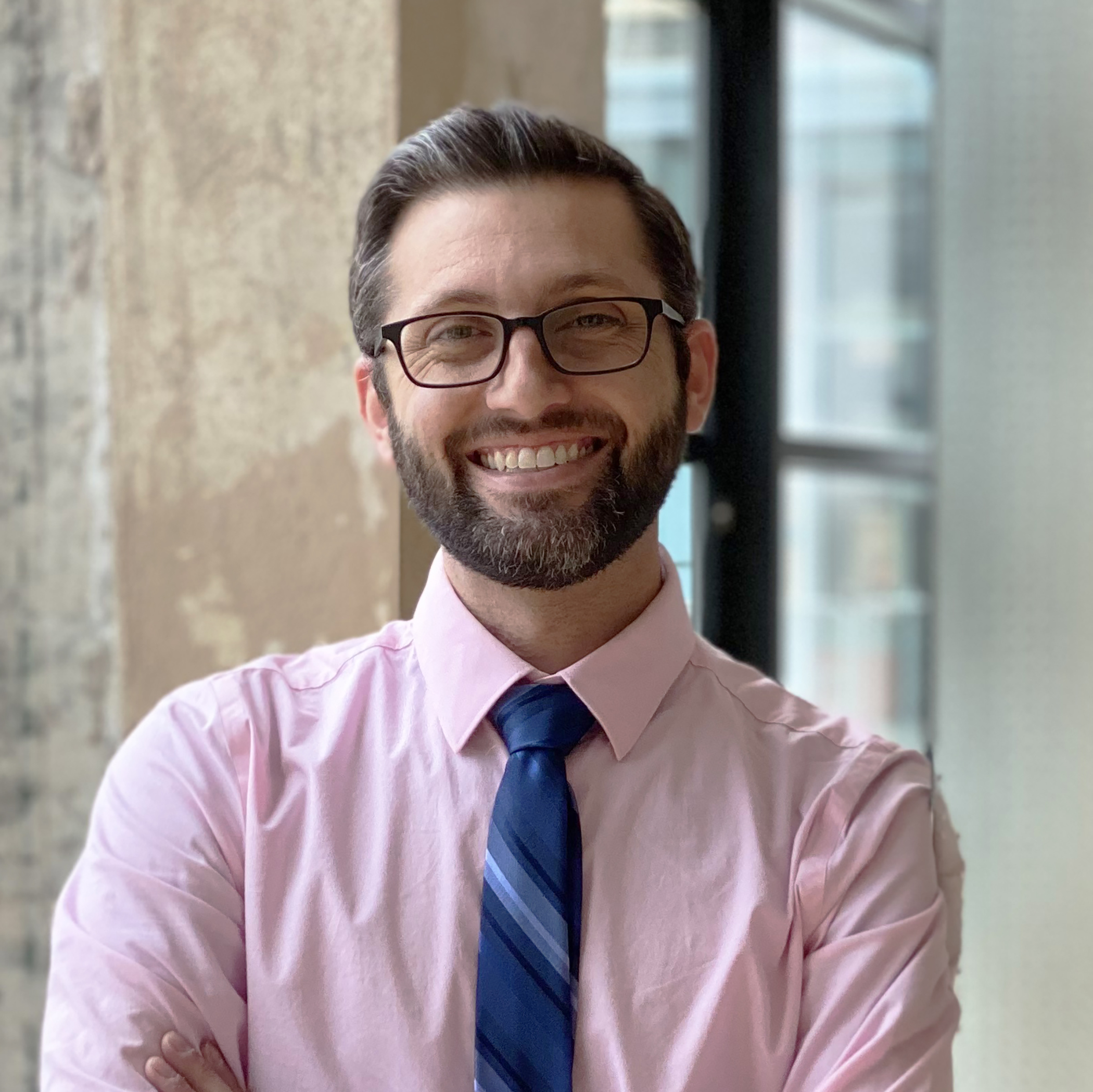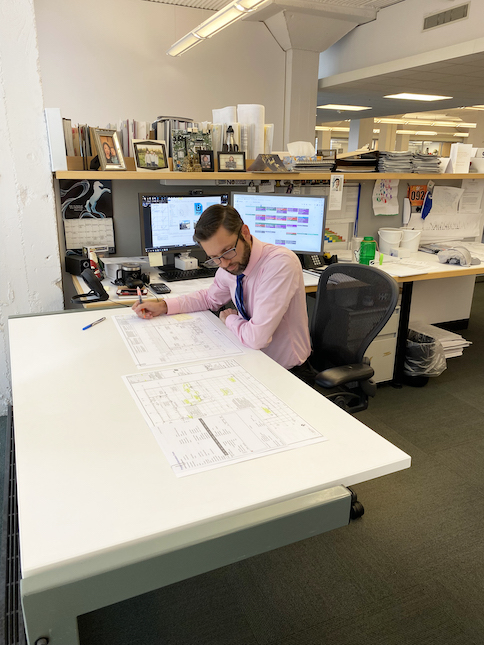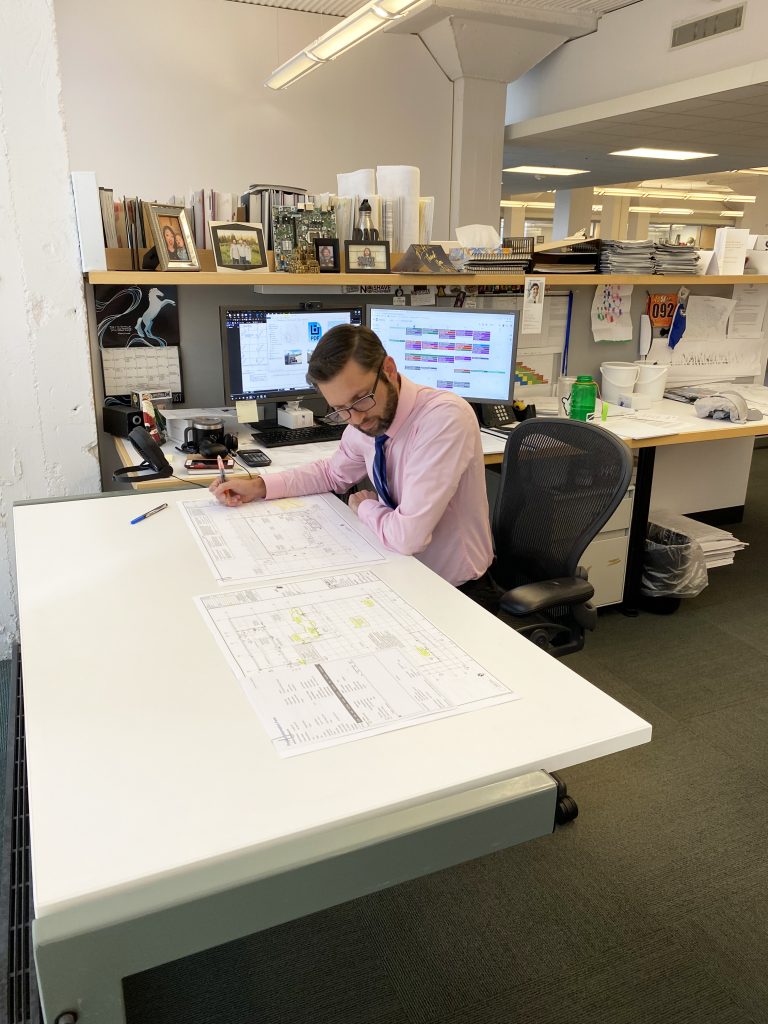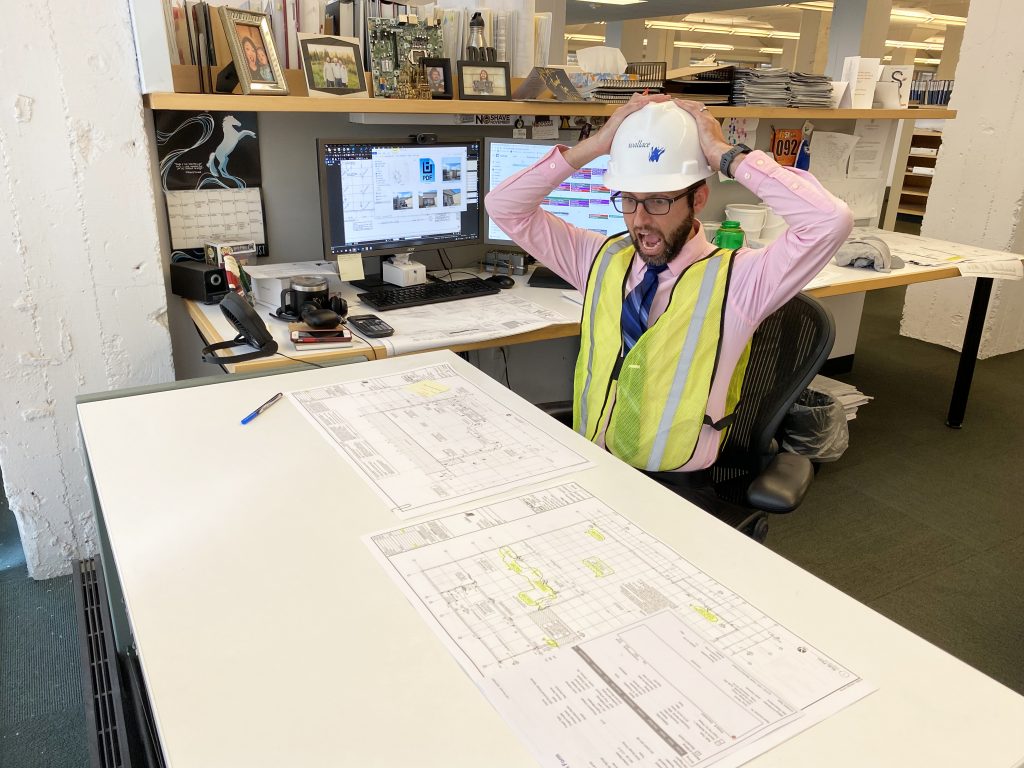
Kyle Haskett, PE
Associate
Kyle received both his Bachelor of Science in Architectural Engineering and Master of Science in Civil Engineering-Structural Emphasis from the University of Oklahoma. He is…
View Profile
What’s it like to be a structural engineer? This week, one of Wallace Design Collective’s newly promoted Associates, Kyle Haskett, PE, shares with us the ins and outs of various aspects of structural engineering and what a day in the life of a structural engineer might look like.

A Day in the LifeMy typical day includes drawing building plans and details and running associated calculations with the goal of conveying a structural design through drawings for a contractor to construct. While that might sound basic, it’s much more than it seems. My day can also include engineering, structural investigations, scope trips, and client relations.
EngineeringTo me, engineering is mostly just solving problems. The most common problem I face is how to support architectural design. I work to determine an efficient method to support the structure for the loads anticipated from code. After loads have been determined I find creative solutions to interface the structural design with the architectural design.
When I first entered the field of engineering, I was a little concerned I would not be fulfilling my creative side. I quickly found myself doing some of my most creative work given the constraints of satisfying code and working to supplement the architectural design. One such example being the use of cantilever beams and joist seat extensions to support an existing load bearing wall to be removed for the building expansion. My job would be much easier if I didn’t care about the aesthetics of the structure and just put beams and columns in the most efficient locations, but that would never satisfy me.
Structural InvestigationsStructural investigations can be a fun way to break up your day (or week). I have been on investigation for slab cracks, wall cracks, damaged walls, damaged facades, roof damage, and many others. There are many components to conducting a structural investigation, including collecting existing documents, making site visits, taking a ton of photos, and measuring/quantifying the structure and its components.
Solving the mystery of the root cause of the damage is usually my favorite part. Sometimes the root cause is evident, such as a storm or earthquake, in which case there is usually some intense and spectacular structural damage. I am always in awe of the damage nature can produce despite our best efforts to resist it.
The hardest part of a structural investigation for me is typically writing the report. Even though I enjoy some aspects of writing (such as sharing thoughts with you through our blog!), at the end of the day, I am an engineer not a writer. My biggest challenge is condensing all the structural information into a short, clear, concise document that the client can skim and quickly understand the structural issue and how to fix it. I always feel like I am leaving things out, but we understand our clients are typically not engineers. There is a tricky balance between giving the client enough information to understand the issues, but not overwhelming them with technical jargon.
Scope TripsAn important part of any engineer’s education should be going out and visiting the structures you help design. New construction site visits are great experiences, however scope trips for existing building projects can sometimes be even more educational. Typically, my reason for performing a scope trip is seeing an existing structure our client has asked us to modify for their intended use.
This is where a lot of important work takes place. If no drawings or plans can be found for an existing structure your client is intending to modify, we as structural engineers have to document the existing structural systems as well as the condition of the structure, including any damage. We start by documenting the gravity system, or all the beams, columns and walls that support typical gravity loads, which range from people to furniture to snow. As we document these elements, we also have to keep an eye out for how the structure is resisting lateral loads, such as wind gusts or earthquake ground movement. Sometimes, depending on the age of the building, a lateral system will not be present, as it was not part of the code required design.
Once we have the existing structural systems documented, we can analyze the system when we return to the office. A regular part of my job- a common but important responsibility for all retrofit/takeover engineers - is clearly conveying the limitation of the existing structure to the client. If no lateral system is present, it can be very costly to make modifications that would increase the lateral load on the building because once you increase them beyond a certain point, you must laterally retrofit the entire building.
Client RelationsThere is a common joke theme that we became engineers so we don’t have to talk to people. It is true that many engineers can relate to this due to our introverted nature. However, engineers are required to interact with, at minimum, people within the industry, including other engineers, architects, and contractors. Effective communication is a skill every young engineer must learn to succeed.
In my experience, when I meet someone and they ask what I do, my response of “structural engineer” is usually accompanied by a friendly, but blank expression. Most people don’t know what a structural engineer does, and a few are curious enough to ask what structural engineering is. I have also found that some within the construction industry also don’t understand what structural engineering is.
While some in my field would prefer to respond to questions from our industry colleagues with, “Trust me, I am an engineer.” I feel this is a real missed opportunity. If a client/architect/owner/ contractor asks me a question, I now have the space to educate them on what exactly it is I do. I believe this helps everyone involved, because I get the chance to describe not just what I am doing but why I am doing it. If I can help someone understand what and why I am doing something, they are more likely to understand the value I am bringing. Helping clients understand the value we as structural engineers add should be a high priority of our jobs.
ConclusionDo I love being a structural engineer? YES! It is a perfect balance of technical and creative. I spend most days in the office but I also get to be in the field and see really astonishing, and sometimes confounding, damage. I also get to visit existing structures and envision how I can work with what is and turn it into what could be. Lastly, I get to interact with others and explain the art of engineering, which I love. Are you interested in learning more about the field of structural engineering? If you said "YES!", let us know how we can help.


Are you passionate about the AEC industry? Do you want to use your talents with a group of the greatest engineers, landscape architects, technicians and support personnel in the industry? You've found the right place. Wallace is unique in the way we strive to make lives better for our clients, communities and employees. And we believe we have more fun doing our job than just about anyone else! The art of possibility. Discover it at Wallace.
Learn More
There are no comments.